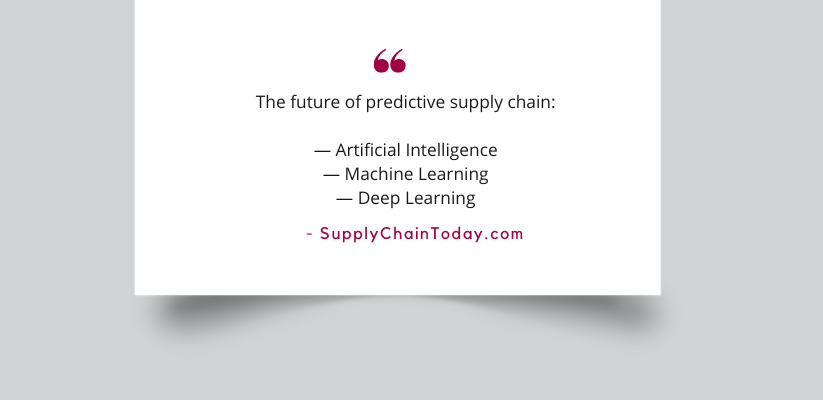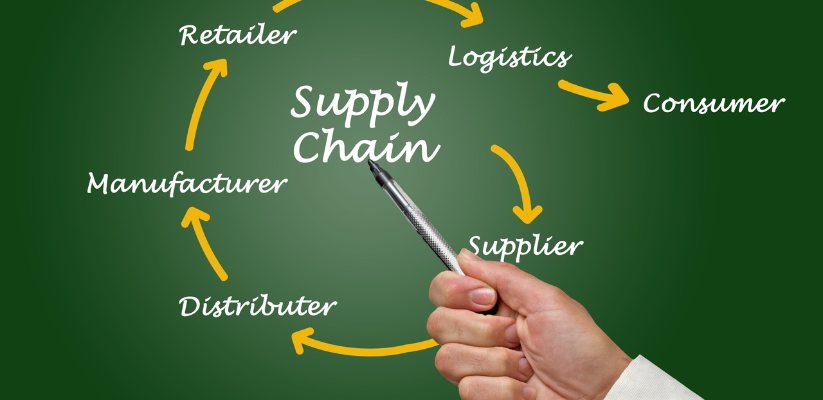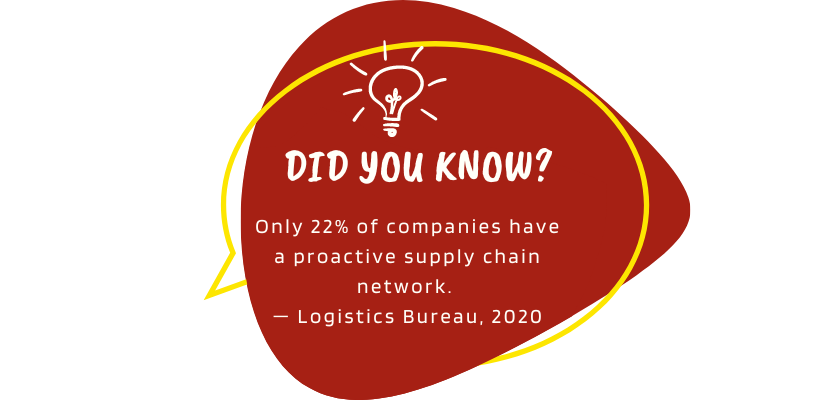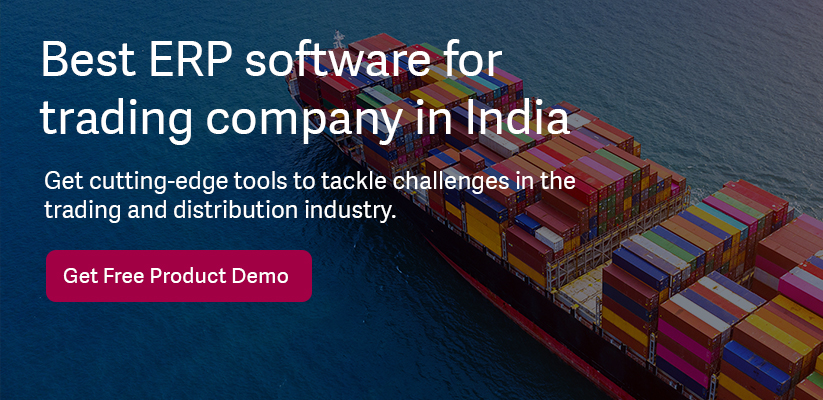Summary: Earlier, international trade was confined to particular pockets worldwide. But today, it’s much more connected and dependent on multiple interconnected partners distributed across the globe. UNCTAD’s Global Trade Update report shows that global trade reached USD 28.5 trillion in 2021, an increase of 13% compared to 2019 and 25% compared to 2020. And this is where the features of supply chain management software help. They automate manual and repetitive actions, facilitate interdepartmental information, optimize logistics & warehouse management that forge robust and trust-worthy relationships between value-chain partners & customers, and create wealth-generating opportunities.
This article will shed light on seven critical features of supply chain management that will help you gain a better strategic perspective of your company and the industry.

1. Real-time information capability
With access to real-time information, you can avoid missing goods, eliminate bottlenecks, and respond to customer queries and grievances quickly. Moreover, the features of supply chain management software allow multiple stakeholders to be on the same page while working on a particular project. The best part is that they don’t need to take permission from different departments to access business-critical documents and essential updates. Instead, they can obtain it instantly.
Here’s an example to explain this concept. Consider Truck A located in City A picks up a consignment from a company’s warehouse. Unfortunately, the engine breaks down on the way, and the truck can no longer travel. Now, the problem is that the company must pay a fine if the truck fails to deliver the items within the specified duration. This is where supply chain management software will come into action. It will automatically intimate the closest truck, say truck B, to pick up the items from truck A, ensuring items are delivered to the destination within the prescribed time. Thanks to supply chain management software, end-to-end traceability and collaboration between multiple partners has become easier than ever.
Here are a few features of the supply chain management system that ensure real-time and collaboration capabilities:
- Real-time notifications: SCM software intimates business stakeholders about each supply chain activity — level of raw materials and finished goods in the warehouse, real-time location of delivery vehicles, and allows them to access critical documents. It also sends notifications to suppliers if the inventory level goes below a predetermined threshold.
- Customized dashboards: Each business stakeholder can view domain-specific data and gather valuable insights through easy-to-use dashboards. This feature provides constant monitoring of business processes and simplifies corporate governance.
- Authorization and privacy: One of the best features of supply chain management software is that it allows only authorized personnel to access business-critical data, ensuring crucial information is in safe hands.
- Self-service portals: A supply chain network consists of multiple partners operating from different locations. Therefore, each of them can’t stay in touch at all times, leading to communication challenges. Password-protected self-service portals allow business partners to share plans and information based on the partner’s activities and preferences, allowing constant communication whenever required.
2. Integrating the whole supply chain
One of the best features of supply chain management software is that it integrates the distributed features of the supply chain, including warehouse centers, Original Equipment Manufacturer (OEM), vendors, suppliers, distributors, customers, packers & movers, and shipments. Moreover, it also integrates disparate business management solutions like email, help desks, third-party applications, legacy systems, etc.
These features build a robust network of information flow and a single source of truth, eliminating connectivity issues. Other benefits include:
- Efficient use of logistics
- Better production planning
- Avoiding excess inventory and stock-outs
- Eliminate the cost of updating and maintaining disparate information systems.
Other benefits of implementing supply chain management software are:
- Operation managers can create BOMs, bills, and customer orders from a centralized location.
- They don’t have to use disparate systems and upload updated reports across different systems.
- No human-induced errors and no chance of miscommunication.
- Systems can be customized based on customer segments and product categories.
3. Forecasting
Businesses today need to forecast the changing market conditions and customer preferences. Without solid forecasting power, it’s impossible to know customer needs, wants, desires, and ambitions, meaning you might lose a fair share of your customers to your competitors.
Forecasting capabilities and advanced analytics are one of the most important features of supply chain management software because of the following reasons:
- Forecast events most likely to occur, allowing you to take preemptive action.
- Recognizing bottlenecks in the system, helping increase production speed and reducing production time.
- Get a comprehensive picture of the business’s current performance and determine its future trajectory.
- Identify system inefficiencies, capitalize on strengths, and understand how business performance will change.
- Planning future customer demand based on the current one.
- Identifying a bad product and recalling it before the customer asks for an official product recall.
Forecasting also mitigates risk by anticipating future demands, allowing you to keep a suitable amount of inventory in the warehouse by providing deep insights based on factual data. It also includes what-if simulations that help you learn how to deal with challenging situations that might come up in the future.
<<<Also Read: 10 Interesting Questions Related to Supply Chain Management>>>
4. Cloud-based accessibility
Cloud-based supply chain management features allow authorized users to access and use features from anywhere, anytime, and on any connected device. The most significant advantage of this feature is that the cloud-based solutions can be set up at a fraction of the cost, in relatively less time, and at a marginal risk compared to on-premise ERP systems.
Other benefits include:
- Shipping order status can be updated immediately.
- Real-time alerts can be shared on the customer’s smartphone instantly.
- Issues can be resolved at short notice.
- Different parties can collaborate and work toward achieving common business goals.
5. Process optimization abilities
Optimizing business functions is one of the essential features of supply chain management software. It allows employees to focus on mission-critical tasks instead of wasting time on repetitive and manual processes that give rise to human-induced errors and take a lot of time. Instead, automated systems can perform simple tasks rapidly without the risk of committing errors and also helps increase revenue.
Companies can automate business functions, such as:
- Order-to-cash cycle
- Paper-based documentation
- Inventory & Warehousing
- Manufacturing
- Logistics & Delivery
Companies can also use AI and machine learning algorithms to perform other crucial tasks, such as checking whether the product is in a usable or best-finished state without any human intervention. In addition, AI’s optimization capabilities allow supply chain companies to move goods from source to destination at the lowest cost possible. This capability is of great help at a time when fuel prices are skyrocketing and national and international shipping regulations are continuously evolving.
6. Customizes supply chain management software
One of the best features of supply chain management software is that it can be customized based on the user’s needs. Business rules can be rewritten and new features can be added on an ad-hoc basis, allowing companies to launch their products in the market quickly. Moreover, most supply chain management solutions enable developers to make changes using programming languages like Python and Java. Supply chain software’s open architecture allows companies to build indigenous applications or tweak existing apps suitable to their business environment. Companies can also build unique variations of existing products to fulfill the changing needs of various customer segments and enhance their productivity.
7. Data Security
Do you know data security breaches are rising? According to recent reports, India ranks sixth on the global breach list. Since 2004, 254.9 million Indian accounts have been leaked and the number is rising rapidly. Even a slight compromise with data can have massive repercussions like:
- Loss of customer trust leads to reduced customer loyalty, which decreases customer segment size.
- Loss of vendor, supplier, and distributor trust causes business loss.
- You come under the purview of the government, regulatory bodies, and watchdogs and may be levied with heavy fines.
Therefore, while selecting an appropriate supply chain management software, you should evaluate the following things:
- Configuration of HTTP security header options
- Compliant with corporate security tools like LDAP, OAuth2, etc.
- Ability to manage the second level of signature to sign modifications on critical fields.
- Full traceability and security that changes are done only by authorized users.
- Information is restricted depending on the user based on factors like a group of companies, a group of logical data, etc.







